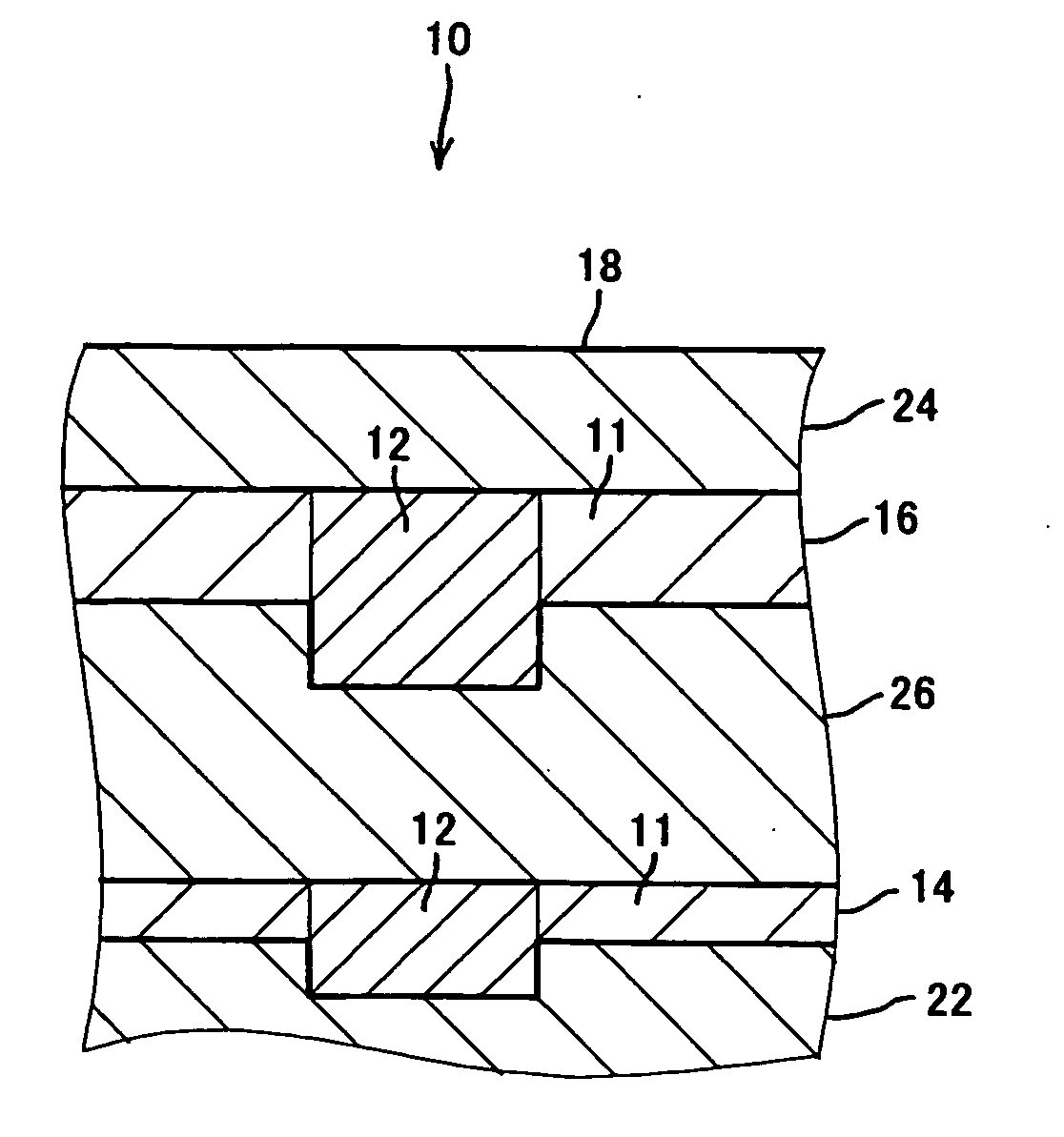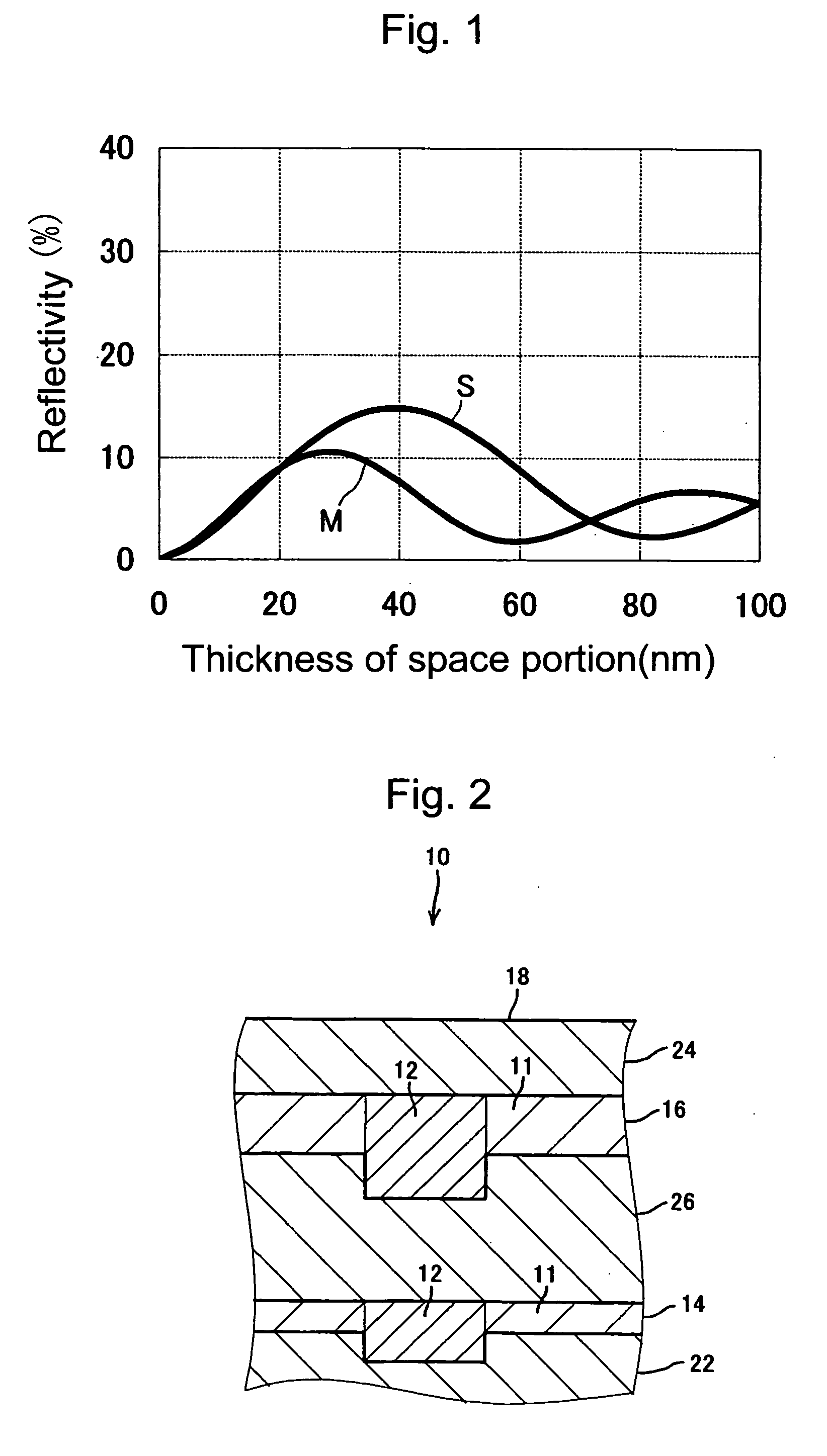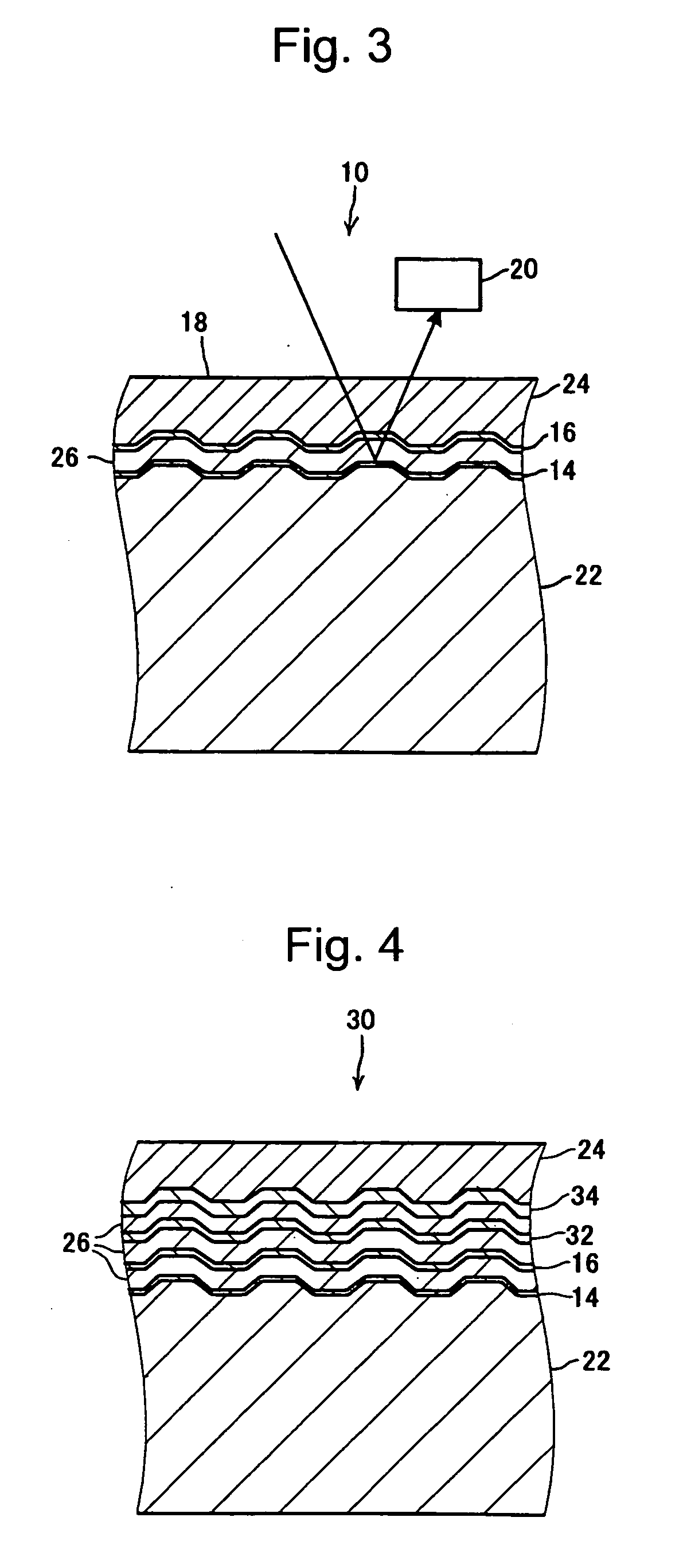Optical recording medium
a recording medium and optical technology, applied in mechanical recording, recording information storage, instruments, etc., can solve the problems of insufficient reflection of the upper recording layer, inability to provide the upper recording layer with a good recording mark, and the difference in reflectivity to be too small to read the recording mark. achieve the effect of good recording mark
- Summary
- Abstract
- Description
- Claims
- Application Information
AI Technical Summary
Benefits of technology
Problems solved by technology
Method used
Image
Examples
working example 1
[0076] Five types of optical recording media with two recording layers were manufactured which had the same configuration as that of the optical recording medium 10 according to the aforementioned first exemplary embodiment. These five types of optical recording media were designed to have the second recording layer 16 formed in thicknesses different from each other, with the other portions than the second recording layer 16 being identical to each other.
[0077] More specifically, the first recording layer 14 and the second recording layer 16 were formed of a material of Bi and O, so that the percentage of the number of O atoms in these first recording layer 14 and second recording layer 16 was 68% (62% or more), and the percentage of the number of Bi atoms was 32%, with no other elements added. The first recording layer 14 was formed in a thickness of approximately 45 nm in the vicinity of which the material provides the maximum reflectivity. On the other hand, the second recording...
working example 2
[0079] In contrast to the aforementioned Working Example 1, one type of optical recording medium was manufactured, in which the first recording layer 14 and the second recording layer are formed of a material of Bi, O, and Ge, so that the percentage of the number of Bi, O, and Ge atoms in these first recording layer 14 and second recording layer 16 is different in each recording layer.
[0080] More specifically, the percentage of the number of Bi, O, and Ge atoms in the first recording layer 14 and the second recording layer 16 was set to the percentages shown in Table 2. As with the aforementioned Working Example 1, the first recording layer 14 was formed in a thickness of approximately 45 nm. On the other hand, the second recording layer 16 was formed in a thickness of 68 nm (which is thicker than the first recording layer 14).
[0081] On this optical recording medium, measurements were made to determine the reflectivity, the recording sensitivity, the 8T_C / N value, and the extincti...
working example 3
[0082] In contrast to the aforementioned Working Example 1, twelve types of optical recording media were manufactured in which the first recording layer 14 and the second recording layer were formed of different materials.
[0083] More specifically, the first recording layer 14 was formed of a material of Bi and O, and a material with Fe added to Bi and O. On the other hand, the second recording layer 16 was formed of a material of Bi and O, and a material with Al, Mg, Zn, Ge, Y, Sn, Sb, V, Dy, and Ti added to Bi and O.
[0084] On these twelve types of optical recording media, measurements were made to determine the reflectivity, the recording sensitivity, the 8T_C / N value, and the extinction coefficient of the first recording layer 14 and the second recording layer 16. The results of the measurements are shown in Table 3. Furthermore, the composition and deposition conditions of the first recording layer 14 and the second recording layer 16 are also indicated in Table 3.
TABLE 3Depo...
PUM
 Login to View More
Login to View More Abstract
Description
Claims
Application Information
 Login to View More
Login to View More - R&D
- Intellectual Property
- Life Sciences
- Materials
- Tech Scout
- Unparalleled Data Quality
- Higher Quality Content
- 60% Fewer Hallucinations
Browse by: Latest US Patents, China's latest patents, Technical Efficacy Thesaurus, Application Domain, Technology Topic, Popular Technical Reports.
© 2025 PatSnap. All rights reserved.Legal|Privacy policy|Modern Slavery Act Transparency Statement|Sitemap|About US| Contact US: help@patsnap.com



